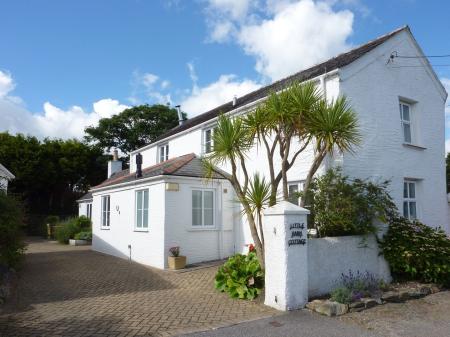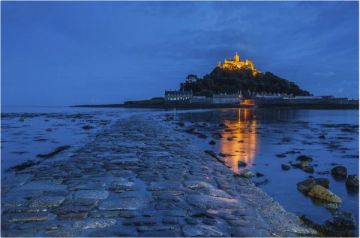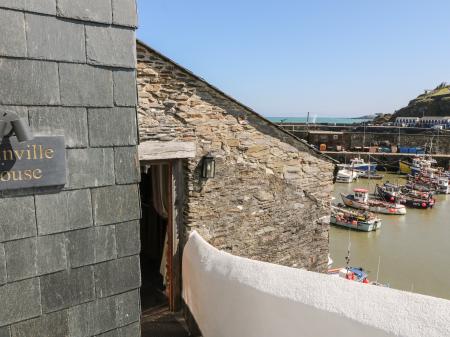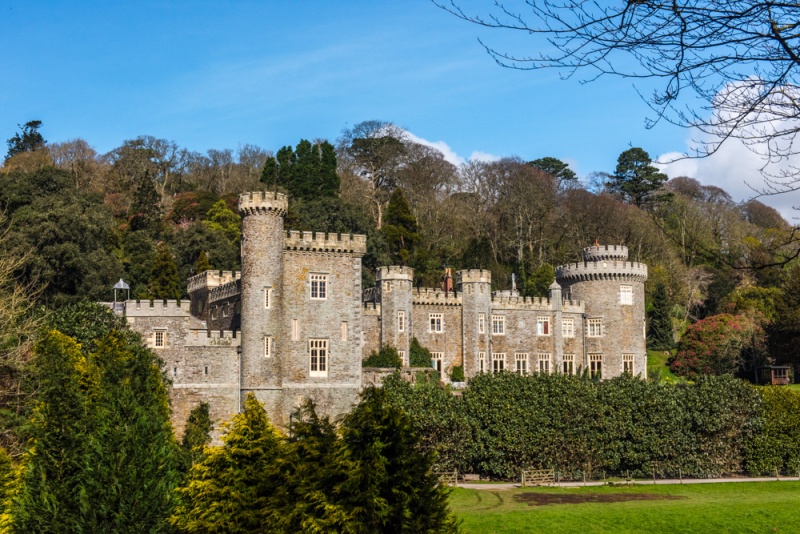
History
Caerhays Castle is a Regency concoction; a fantasy fortress begun in 1807 by John Nash, architect of the Brighton Royal Pavilion, for John Bettesworth-Trevanion near the site of an earlier medieval manor house.
Bettesworth-Trevanion lived beyond his means, and he was hounded by creditors. Unable to pay off his debts, Bettesworth-Trevanion was forced to go abroad, leaving Caerhays to be seized. The house stood empty for a decade before Sir William Williams, 1st Baronet of Tregullow, purchased it in 1854.
The Gardens at Caerhays
The castle passed through generations of Williams family owners until it came to John Charles Williams. John Charles was an avid plant collector and gave up his career in politics to focus on creating his garden. He sponsored plant hunting expeditions abroad, and these new plants were used to help create the gardens surrounding the castle. Many of the plants at Caerhays come from seeds acquired by two great Victorian plant hunters; George Forrest and EH Wilson, who travelled into the far reaches of China and the Himalayas in search of species unknown in Britain.
The gardens stretch to almost 140 acres, with 120 acres of woodland garden, and are laid out around 4 long routes (red, blue, yellow, and green) linked by grassy trails and steps. The walks are arranged to give glimpses down the slope to the romantic turrets of the castle and the landscaped lake in the valley bottom.

There are winding trails through a glorious landscape of over 600 different varieties of plants, including azaleas and camellias. The real attraction at Caerhays are the rhododendrons and magnolias. There are over 250 different types of the former and the largest collection in England of the latter. There are over 600 species of magnolias and named hybrids from across the globe. The very first x williamsii camellia was bred here at Caerhays.
Caerhays gardens enjoy a unique micro-climate, sheltered from the effects of the prevailing westerly wind by woodland and the slope of the hills. This provides a humid, moist environment where tender varieties of Oriental plants can thrive. The acidic soil provides a healthy environment for ericaceous (lime-hating) plants like heathers.
There are numerous plants from Australasia, champion trees, evergreen oaks, hydrangeas, colourful acers, and of course, magnolias and rhododendron! To really appreciate Caerhays just imagine that you are an early 20th-century plant hunter halfway up a mountain in the Chinese province of Yunnan.
The gardens are heaven for horticulturalists, but you don't have to have a green thumb or a degree in botany to enjoy the beautiful mix of colours and exotic plants, set in a magnificent wooded coastal landscape.
The castle at Caerhays is rarely open to visitors, being marketed more as a wedding venue, but the gardens are open 100 days per year from Spring through Autumn.
Visiting
We came to Caerhays on a beautifully sunny day in April, when daffodils lined the banks below the house and magnolia and rhododendron petals lay strewn on the garden paths. By chance the house was open for guided tours, so we divided up and I explored the gardens with my camera while my partner joined the house tour where photography was not allowed.
The combination of the beautiful spring weather and the colourful blossoms made exploring the gardens a delight. I could have spent twice as long wandering along the trails that criss-cross the slope above the house.
The Caerhays estate also runs the popular Burncoose Woodland Garden near Redruth.
Historic House: A mock castle built by Regency architect John Nash set in lovely parkland gardens of 60 acres.









 We've 'tagged' this attraction information to help you find related historic attractions and learn more about major time periods mentioned.
We've 'tagged' this attraction information to help you find related historic attractions and learn more about major time periods mentioned.